Spending a night inside the stone walls of Monemvasia honestly felt like slipping into another world.
I stayed inside this medieval fortress, surrounded by centuries of history, wild sea views, and an atmosphere you just can’t find anywhere else.
The fortress walls glowed in the evening, casting long shadows across the narrow cobbled paths.
Sleep came easily, but the real magic started after sunset—when the crowds faded and the stone passageways turned quiet and dreamlike.
Waking up inside Monemvasia changed how I saw Greece’s history.
The silence in the morning, broken only by distant waves, made it easy to picture what life felt like here centuries ago.
If you want more than a quick day trip, honestly, spending the night within Monemvasia’s walls is the way to go.
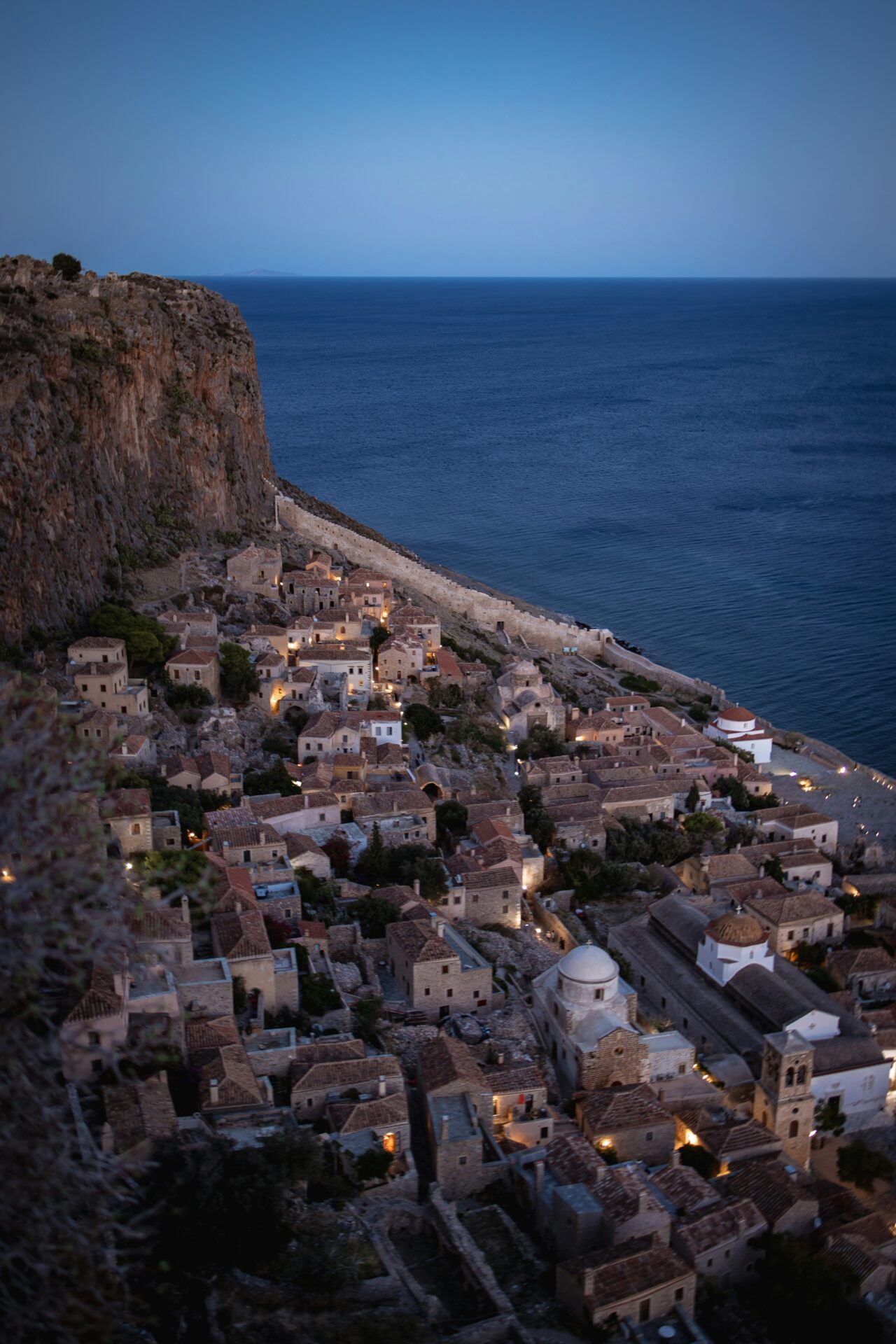
Entering Monemvasia: First Impressions of the Timeless Fortress
Stepping into Monemvasia, I immediately faced a living piece of Byzantine history.
The blend of ancient stonework, narrow lanes, and the huge Mediterranean backdrop created a scene that felt mysterious and oddly welcoming.
Historic Stone Walls and Majestic Gateways
Crossing the narrow causeway that links mainland Greece to Monemvasia, I spotted the sturdy stone walls rising straight from the sea.
These defenses once stopped invaders, and they still give the citadel this untouched, almost secretive vibe.
The ancient gateway stood ahead, an arched passageway battered by centuries of wind and salt.
As I walked through, I felt the weight of history—can you imagine all the feet that pounded these stones, traders and soldiers brushing past?
Photos from my trip never really capture how massive these walls are.
Builders during the Byzantine era fit many of the stones so smoothly, I sometimes forgot they’re hundreds of years old.
Plaques scattered along the entrance offer quick facts, but nothing compares to seeing the stonework up close.
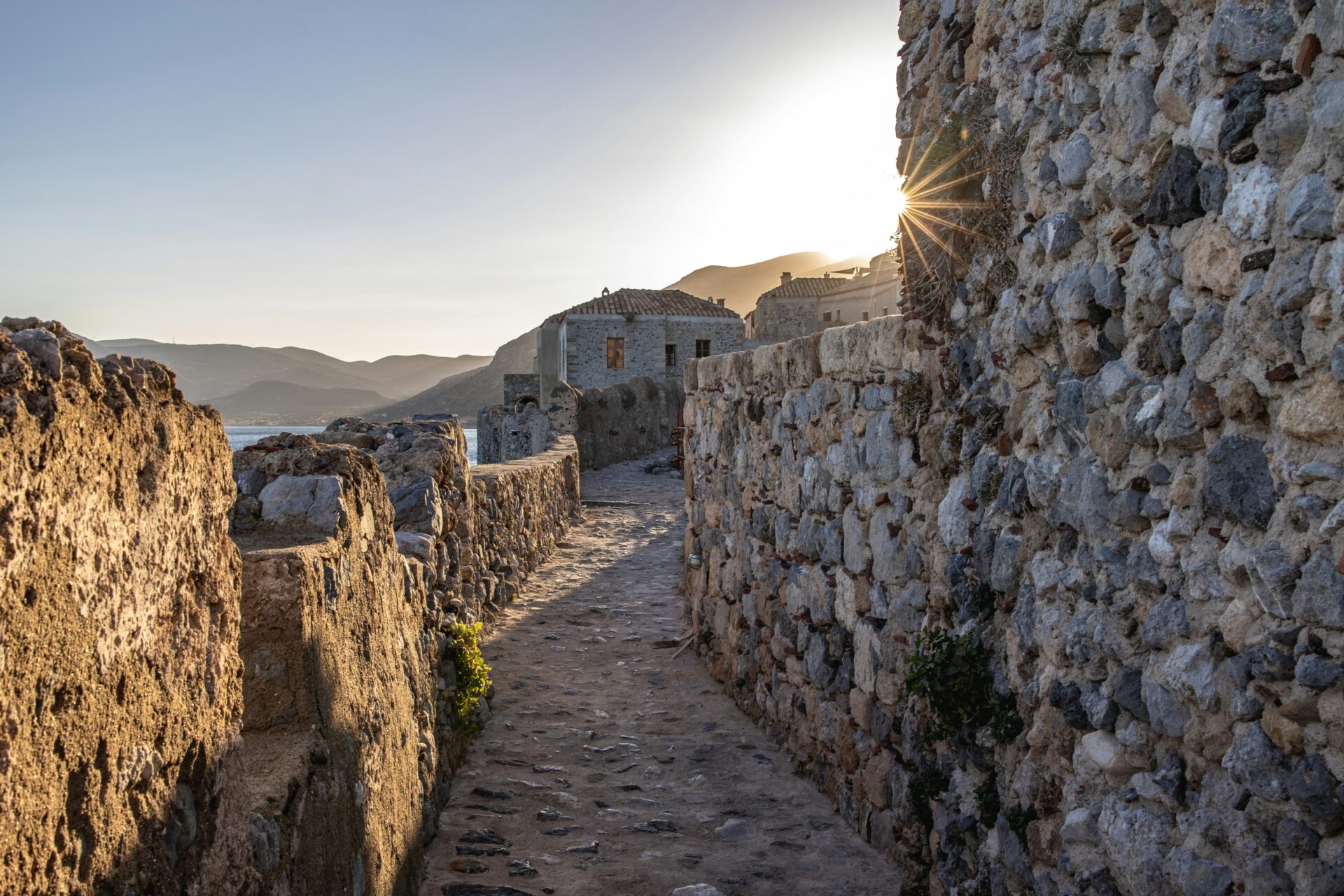
Atmosphere of Arrival: From Mainland Greece to Medieval Stronghold
Arriving at Monemvasia feels different because you have to leave your car outside and walk in.
The walk begins with views of modern Greece but quickly shifts into a medieval world as the gate swallows up sound and sunlight.
Inside, the narrow cobblestone lanes twist through the old town like a maze.
The air smells faintly of the sea, mixed with warm stone.
Travelers around me spoke in low voices, maybe in awe or just soaking up the peace.
Old stone homes cluster in earth tones, iron lanterns lighting up the evening.
Every step reminded me that people have lived, loved, and defended this fortress for over a thousand years.
It’s a mix of daily life and deep history—a place that invites you to slow down and notice the details.

Panoramic Views Overlooking the Mediterranean
One of my favorite moments came when I climbed a short stairway to the top of the walls.
The view is a sweeping panorama that feels endless.
Below, the Aegean Sea stretches out, deep blue and dotted with fishing boats.
To the west, the rooftops of Monemvasia’s ancient houses shine in the sun, their tiles glowing orange-red against the sky.
Looking out, I finally understood why early settlers picked this rocky outcrop: the 360-degree view makes it easy to spot friends or foes.
I snapped a bunch of photos, but honestly, no image does the Mediterranean justice.
The contrast between the rugged stone and sparkling water is sharp and unforgettable—something that sticks with you long after you leave.

Exploring the Maze: Streets, Squares, and Architectural Wonders
Inside Monemvasia, every step took me deeper into a world shaped by centuries of history.
Narrow cobblestone paths, sunlit squares, and layers of architecture from different eras give the town its unique character.
Winding Cobblestone Streets and Picturesque Alleyways
The streets twist and turn like a living maze.
Each alley leads somewhere new: tiny shops tucked into stone buildings, arched passageways, and staircases smoothed by time and countless footsteps.
In the morning and evening, soft golden light spills over the stones, making every step perfect for photos.
Street lamps flicker after dusk, casting gentle shadows on the walls.
Every bend feels like a scene from medieval Greece.
I often paused to snap a picture or just soak in the atmosphere, wondering who else had walked these stones during the days of ancient Greece.
Many alleyways are barely two people wide.
It’s easy to lose yourself for a while, but small signs pointing to landmarks help keep you on track.
Streets and walks here aren’t just ways to get around; they drop you right into Monemvasia’s story.

Iconic Town Squares and Ancient Churches
At the heart of Monemvasia, a few main squares offer space to pause and take it all in.
The largest square opens up with a large cannon aimed out over the sea—a reminder of battles long past.
Here, I found shady benches perfect for people-watching as locals and visitors meet, chat, or just enjoy the view.
Around the squares, ancient churches from the Byzantine and Venetian periods still stand.
The Church of Agia Sofia, perched high in the upper town, stands out with its dome and mosaics.
I stepped inside and saw candlelight flickering over old icons and stone walls.
There are also smaller chapels, some with faded frescoes, offering quiet spots for reflection.
If you visit, try to time your walk for a sunset from the main square; the changing light makes the stone glow, and you can almost feel the history settle into the silence.
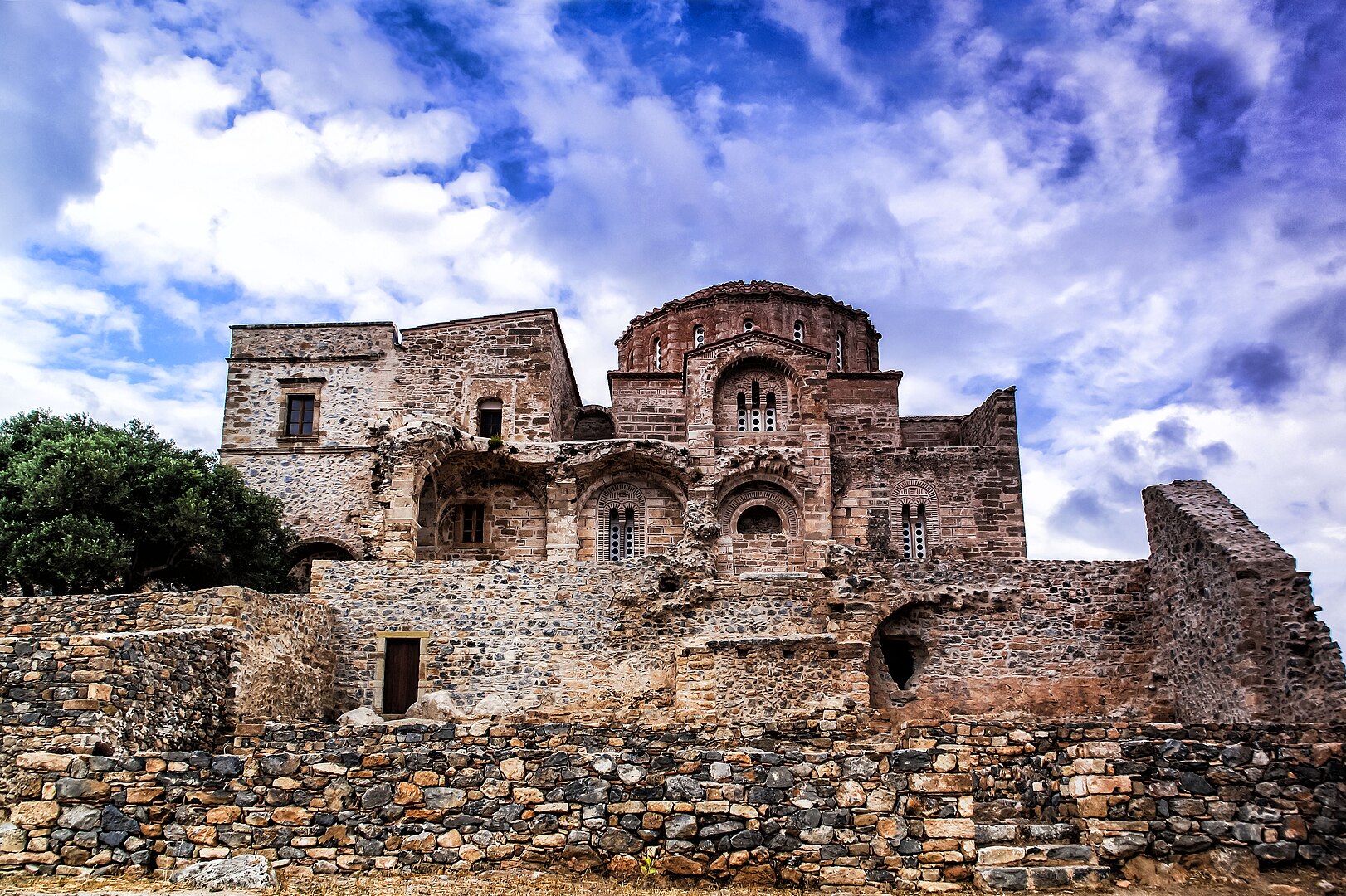
Ottoman, Byzantine, and Venetian Influences
Walking through Monemvasia, I noticed the mix of Ottoman, Byzantine, and Venetian architecture everywhere.
Byzantine stone houses with arched windows stand next to Venetian mansions with grand balconies.
Ottoman features, like pointed arches and narrow windows, sneak in quietly, mostly in doors and some public buildings.
Building details fascinated me: thick fortress walls, rooftop tiles in Delft blue, and doors reinforced with heavy iron.
Even the older churches show this mix, with orthodox domes above and Venetian Gothic details along the entrances.
Here’s a quick table to show some key features:
| Era/Influence | Notable Features |
|---|---|
| Byzantine | Domes, mosaics, thick stone walls |
| Venetian | Grand balconies, decorative entrances |
| Ottoman | Pointed arches, slender windows, iron doors |
Every angle and street corner offered more photos and memories, shaped by the empires that once called Monemvasia home.
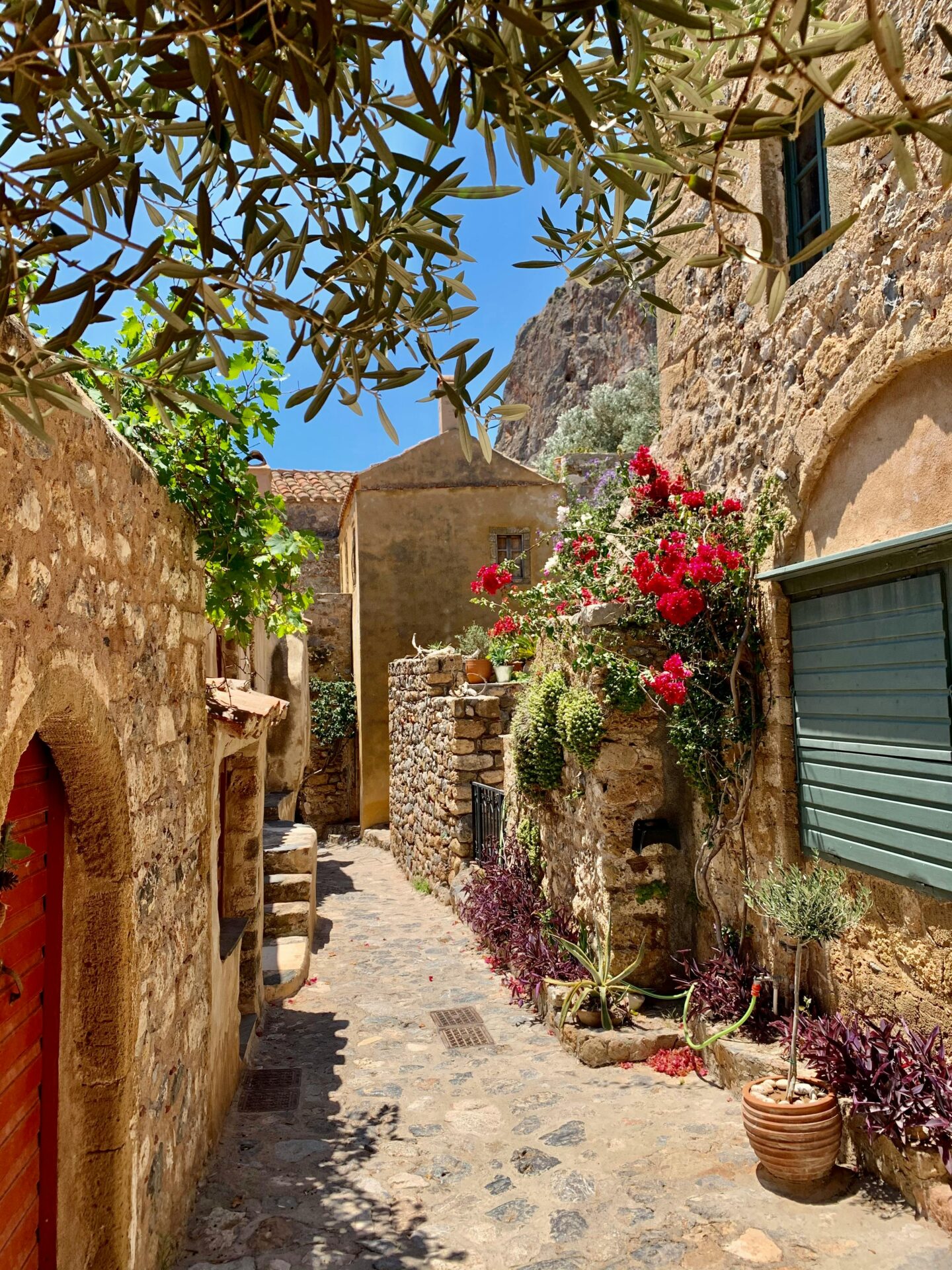
A Night Within the Fortress: Unforgettable Accommodations and Nightlife
Sleeping inside Monemvasia’s ancient stone walls felt peaceful and, honestly, a bit magical.
This stone fortress comes alive after dark, blending history, unique places to stay, and a cozy food scene that lingers late into the night.
Staying in Stone-Built Hotels and Guesthouses
I picked a hotel built right into the fortress walls.
Worn stone steps led to a heavy wooden door.
Inside, the room had thick stone walls, wooden beams, and a window looking out over the Aegean Sea.
Places like Likinia and Moni really make you feel like you’re living in a different era.
You won’t find big hotels here—most places are small guesthouses or boutique hotels.
Rooms keep their medieval feel but add comforts like Wi-Fi and air conditioning.
Prices can vary, but expect to pay a bit more to stay inside the fortress—especially if you want sea views or a balcony.
It felt worth it for the privacy, the historic setting, and being able to step right out onto the cobbled alleys.
Some guesthouses serve breakfast in a small stone courtyard or on a rooftop terrace.
Evenings are especially quiet and feel exclusive, with soft lights against ancient stone.

Atmospheric Restaurants and Local Cuisine
After sunset, Monemvasia’s streets glow with lantern light.
Small restaurants and tavernas open along the winding alleys, filled with the smells of grilling meats, fresh seafood, and baked bread.
I got pulled into a tiny spot with just six tables, where the owner suggested the catch of the day and a glass of local Malvasia wine.
Prices in these restaurants range from casual to a bit fancy.
Most places focus on local ingredients: olives, cheese, honey, and herbs.
Watching people share meze plates or sipping wine beneath the castle walls, I felt part of something old and ongoing.
Eating here is as much about the atmosphere as the food—every meal comes with a view of stone arches and quietly bustling lanes.
Late at night, it’s easy to linger over dessert or a drink at a terrace café.
The sound of distant waves and a sky full of stars make Monemvasia’s nightlife feel intimate but never crowded.
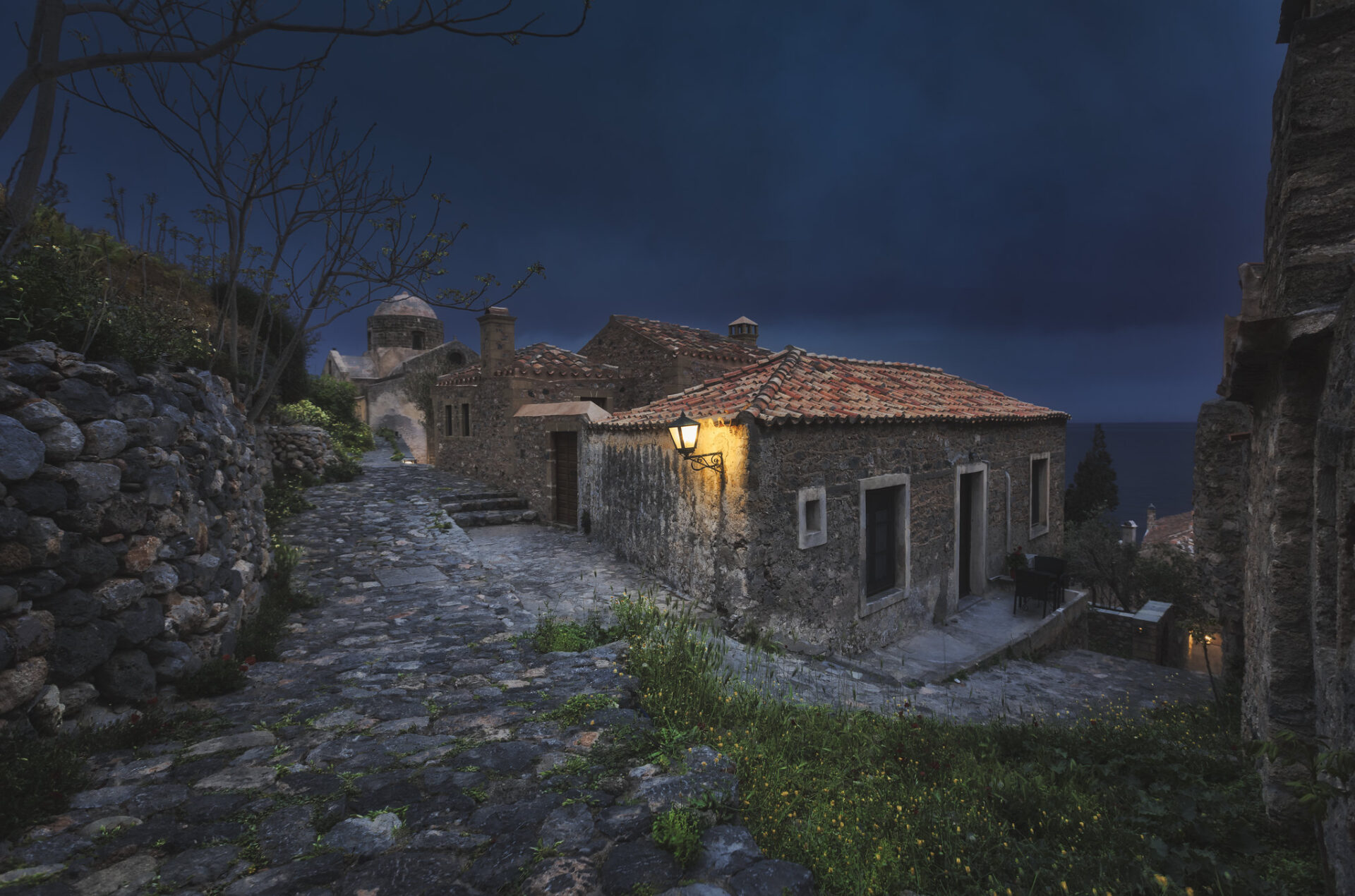
Enchantment at Dusk: Sunset Views and After Dark Magic
Monemvasia changes as evening arrives.
The last light makes the stone walls shine, and everything feels deeper, more alive.
Sunset and after dark here are full of color, texture, and memories you’ll want to hold onto.
Golden Hour Over the Mediterranean
As the sun drops, the Mediterranean glows with gold and pink.
From the fortress walls, I watched Monemvasia’s rooftops outlined by warm rays.
The sea below shimmered, reflecting orange streaks that faded to red.
Locals and travelers find their own spots along the ramparts or quiet terraces.
Everyone pauses, almost holding their breath, as shadows stretch across the cobbled lanes.
The ancient walls change color—gray to amber, stone to gold.
Some wander along the coast, feeling the breeze and taking in the view.
Others sit in small courtyards, sipping Greek wine and sharing quiet conversation.
Time slows down as the light fades, making the moment hard to forget.

Capturing the Moment: Nighttime Photos and Memories
Once twilight settles, the fortress gets a new look.
Low lanterns light up ancient doorways, and the narrow alleys seem to invite you to explore.
I reached for my camera to capture these changes, aiming for clear shots in the dim light.
Getting good photos after dark isn’t easy.
I use a tripod and set my phone or camera to night mode for sharper images.
Close-ups of weathered stones or wide shots of glowing windows come out best with steady hands and a slow shutter speed.
Tip: Early evening gives you enough natural light for vibrant shots without harsh glare.
After dark, I pay attention to how shadows play on the walls and frame my photos with care.
Some of my favorite memories aren’t just the images I took, but the quiet minutes in between, standing in the cool, lantern-lit streets, letting Monemvasia’s charm sink in.
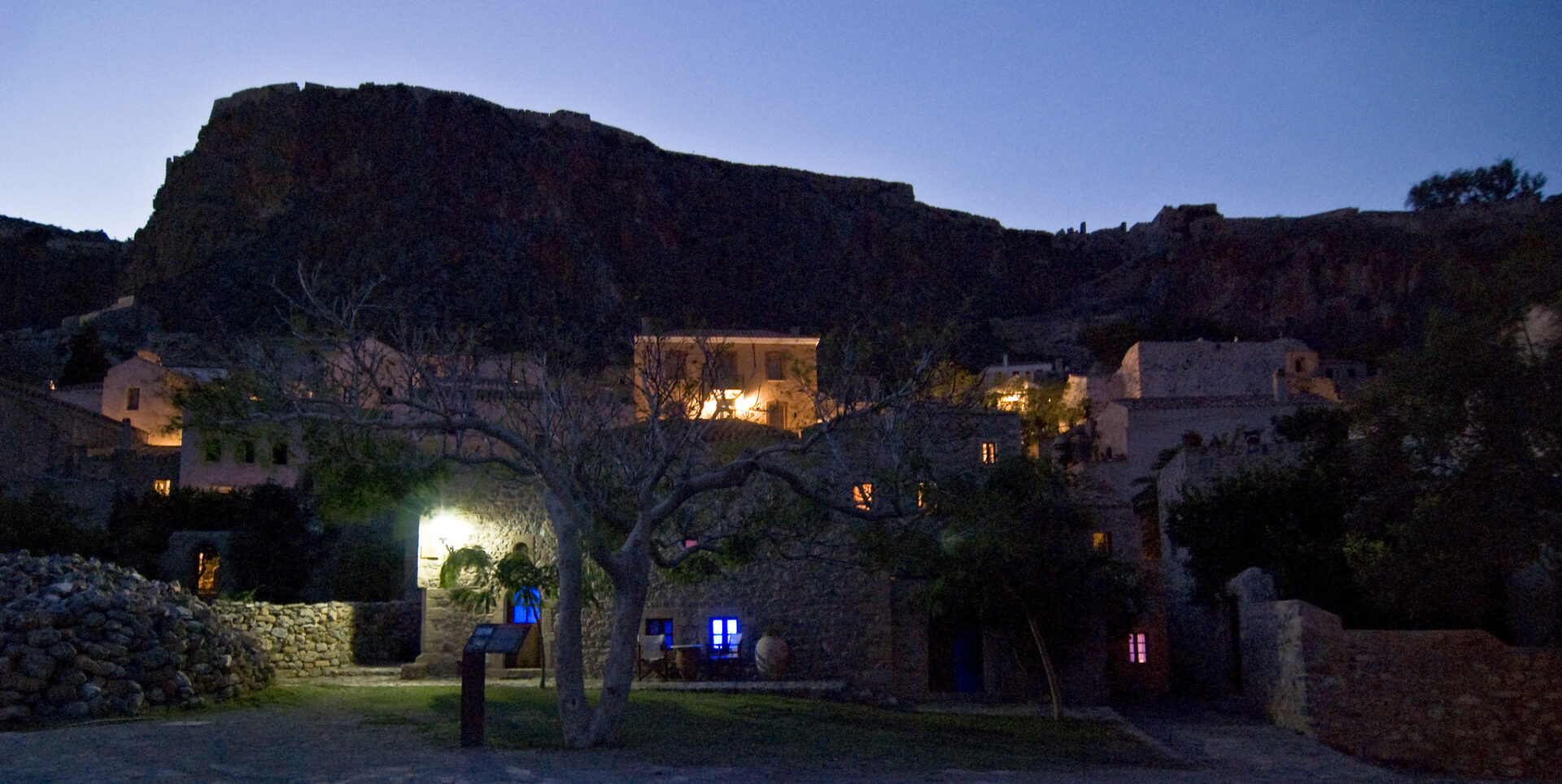
Living Traditions: Monemvasia Customs, Experiences, and Local Life
From the moment I passed through Monemvasia’s stone gate, daily life felt close and full of stories.
Every street, café, and market made me feel like I’d stepped into a living tradition that connects the Greek mainland, the Peloponnese, and even the far-off islands.
Walking Tours and Storytelling
Wandering the narrow paths of the old Kastro, I joined a guided walking tour led by a local whose family has lived here for generations.
Each step brought Monemvasia’s history to life, from Byzantine chapels to Venetian homes.
My guide wove in local legends and explained customs that still shape annual festivals.
Along the way, we stopped at a small square where village elders shared tales about invasions, trade, and island connections.
Storytelling isn’t just for tourists here; it’s part of community evenings, sometimes around small tables or at the local kafeneio over Greek coffee.
These stories connected me to Apollonia and beyond, helping me see how Monemvasia fits into the bigger Greek story.
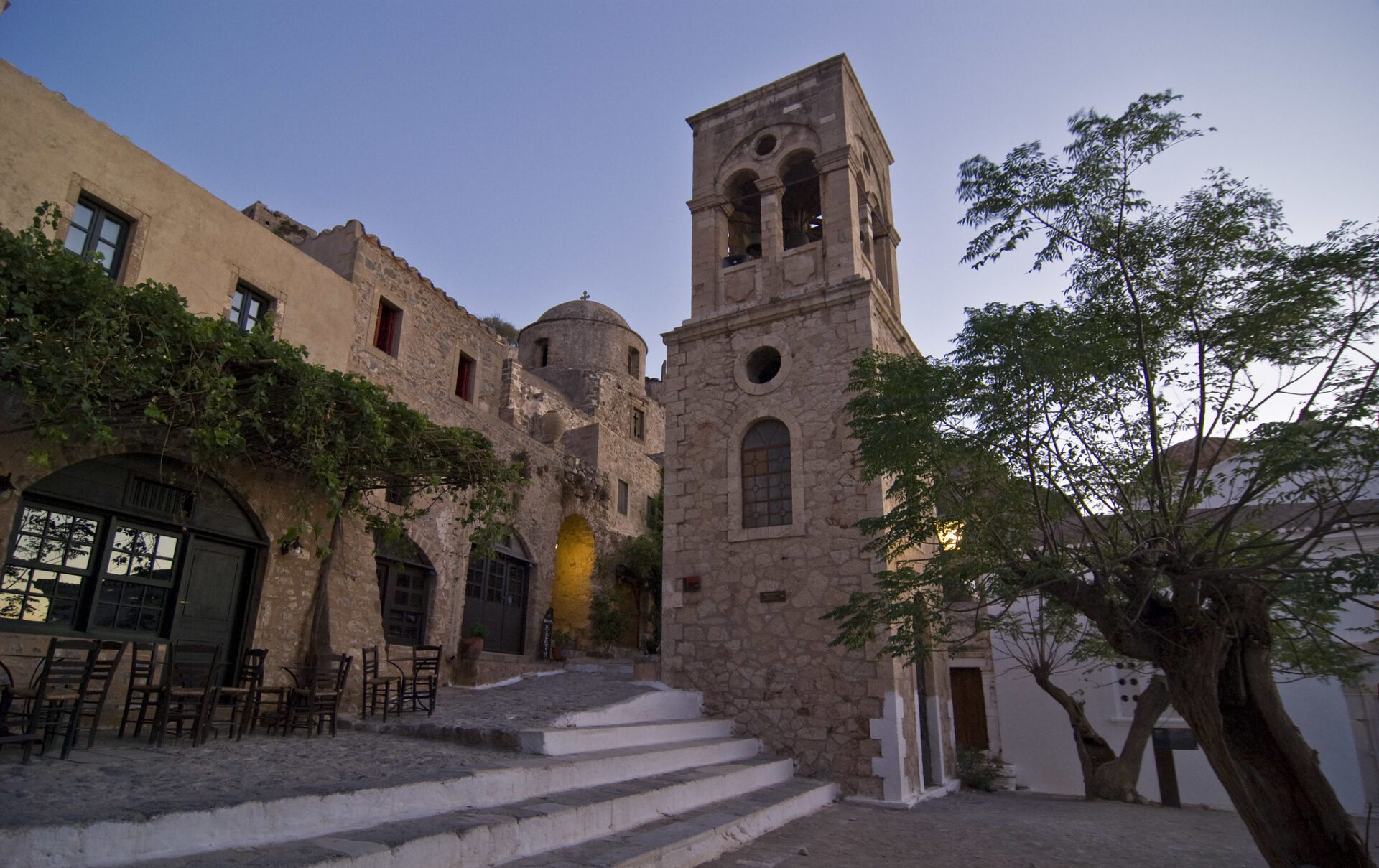
Exploring Local Crafts, Shops, and Culinary Culture
Inside Monemvasia’s stone walls, I wandered through narrow lanes packed with craft shops and family-run stores.
Artisans here weave, shape pottery, and carve stone, drawing inspiration from nearby Peloponnese towns and Greek islands like Folegandros or Sifnos.
I ducked into a workshop and watched a potter shape vases by hand. He told me these techniques have been passed down for centuries.
Food here has its own traditions, too.
Several tavernas run cooking classes, so I tried my hand at making dakos and a few other simple, flavorful dishes.
Tasting Malvasia wine with local olives in a medieval courtyard, I felt oddly connected to the rhythms of daily life.
Small bakeries tempted me with honey-drenched sweets.
The best tables always seemed to gather islanders or visiting Greeks, who traded stories over plates of meze.
| Craft | Where to Find |
|---|---|
| Pottery | Kastro, artisanal shops |
| Weaving | Local markets, Apollonia |
| Stone mosaics | Streetside studios |
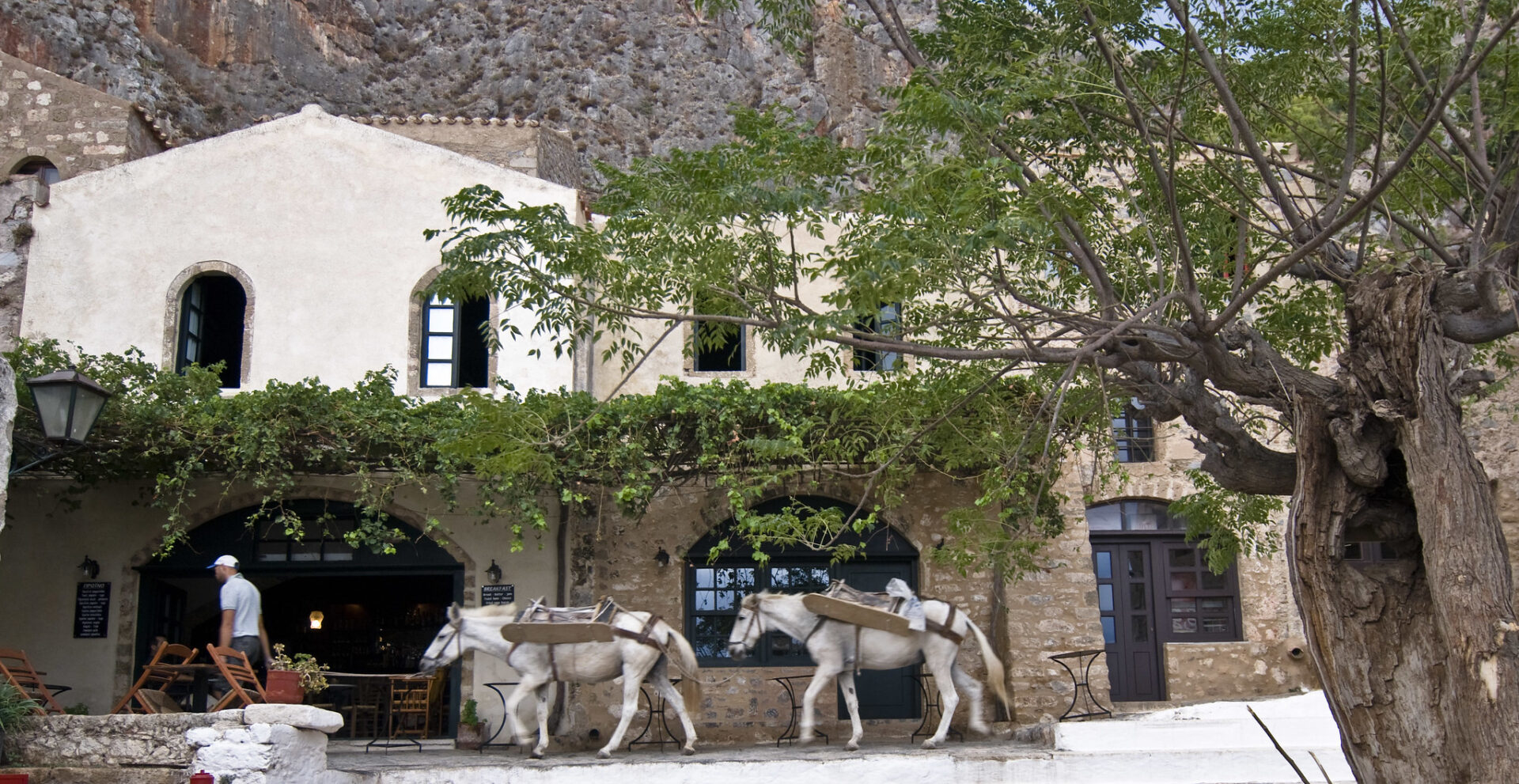
Connections With the Peloponnese and Greek Islands
Monemvasia might seem cut off from everything, but honestly, it’s pretty connected to the rest of the region.
Ferries run to islands like Naxos, Paros, and Crete, so locals can hop over whenever they want.
Every year, people from places like Folegandros and Sifnos show up with new recipes, handmade crafts, and fresh festival traditions.
That energy keeps Monemvasia’s culture lively and a little unpredictable.
Locals always mention friends or business partners in Nafplio or Heraklion—it’s like everyone knows someone on another coast.
I found out that beach days aren’t just for tourists.
Families from the Kastro like to gather on those quiet Aegean stretches, and sometimes they’ll head out to nearby islands for a holiday.
This mix of Peloponnese roots and island vibes gives Monemvasia its warm, timeless charm.

